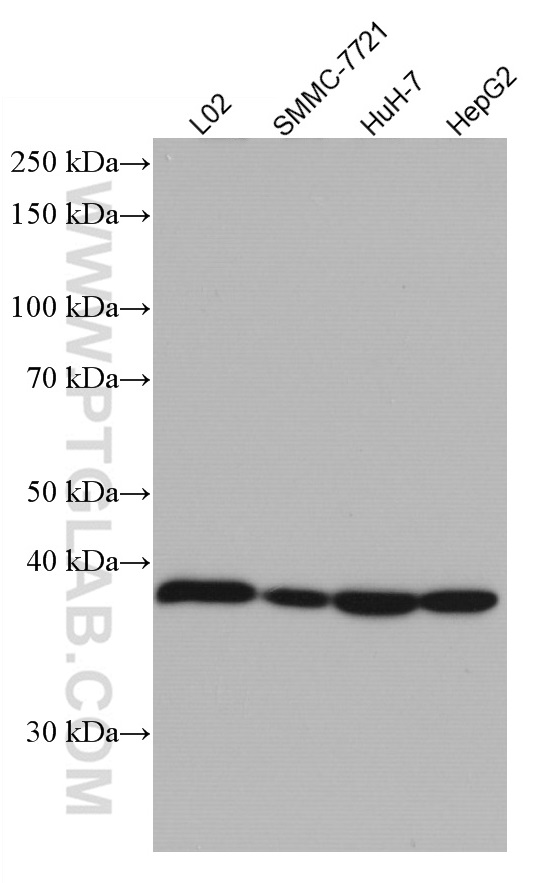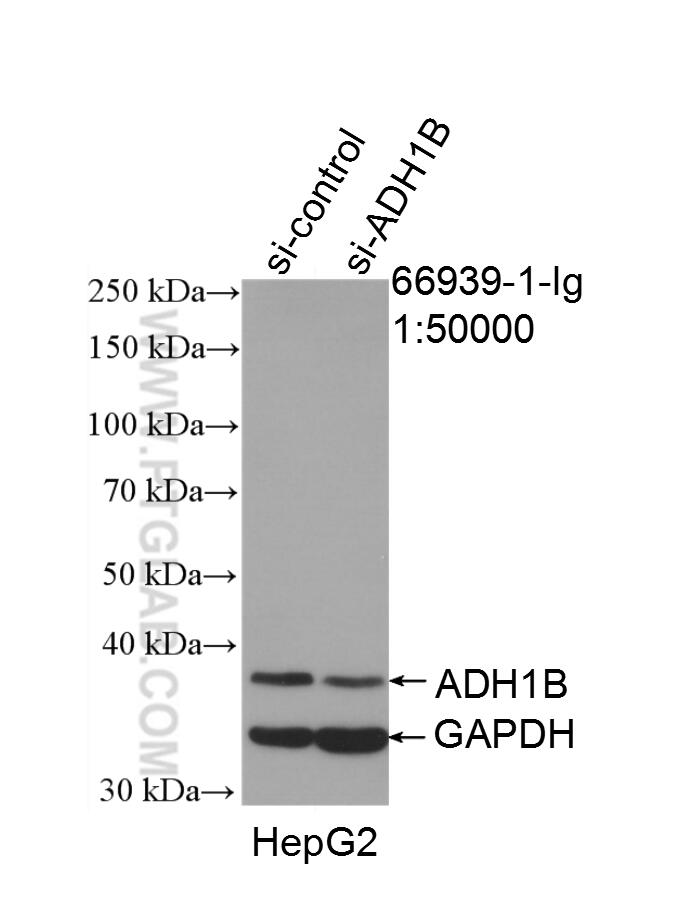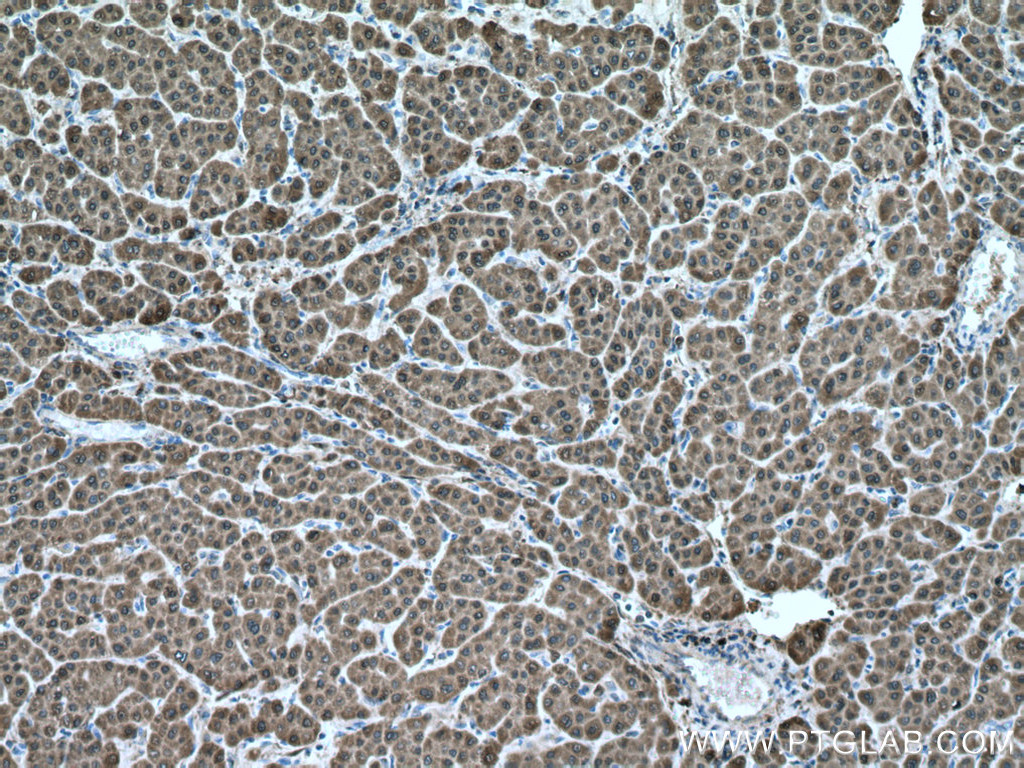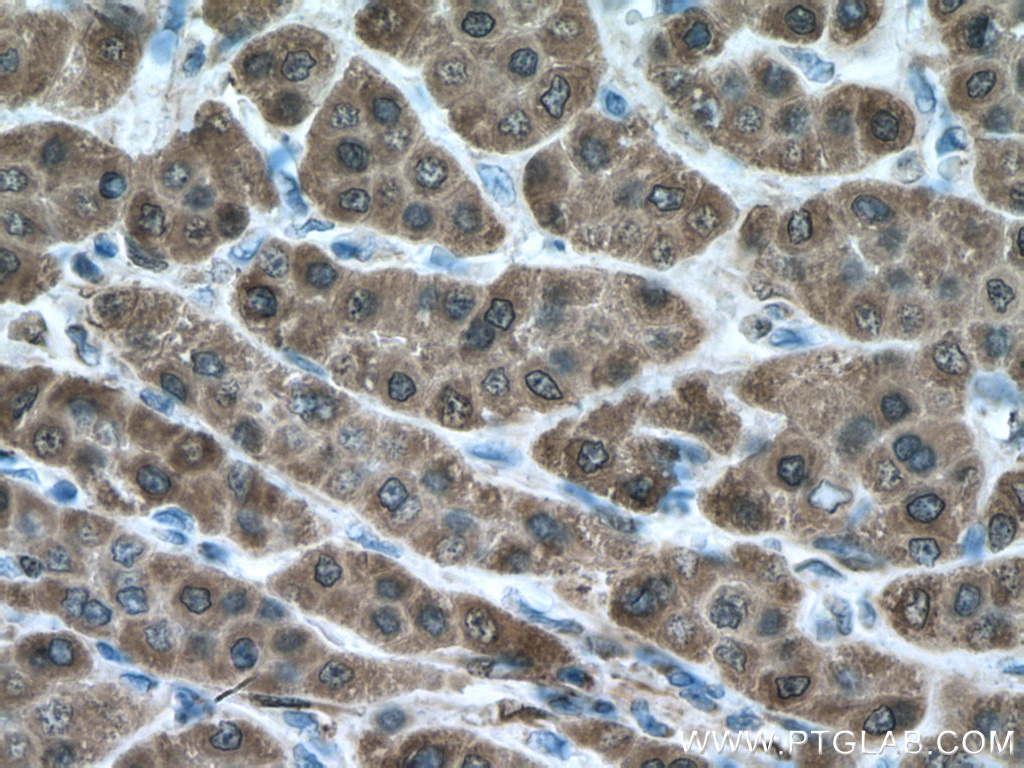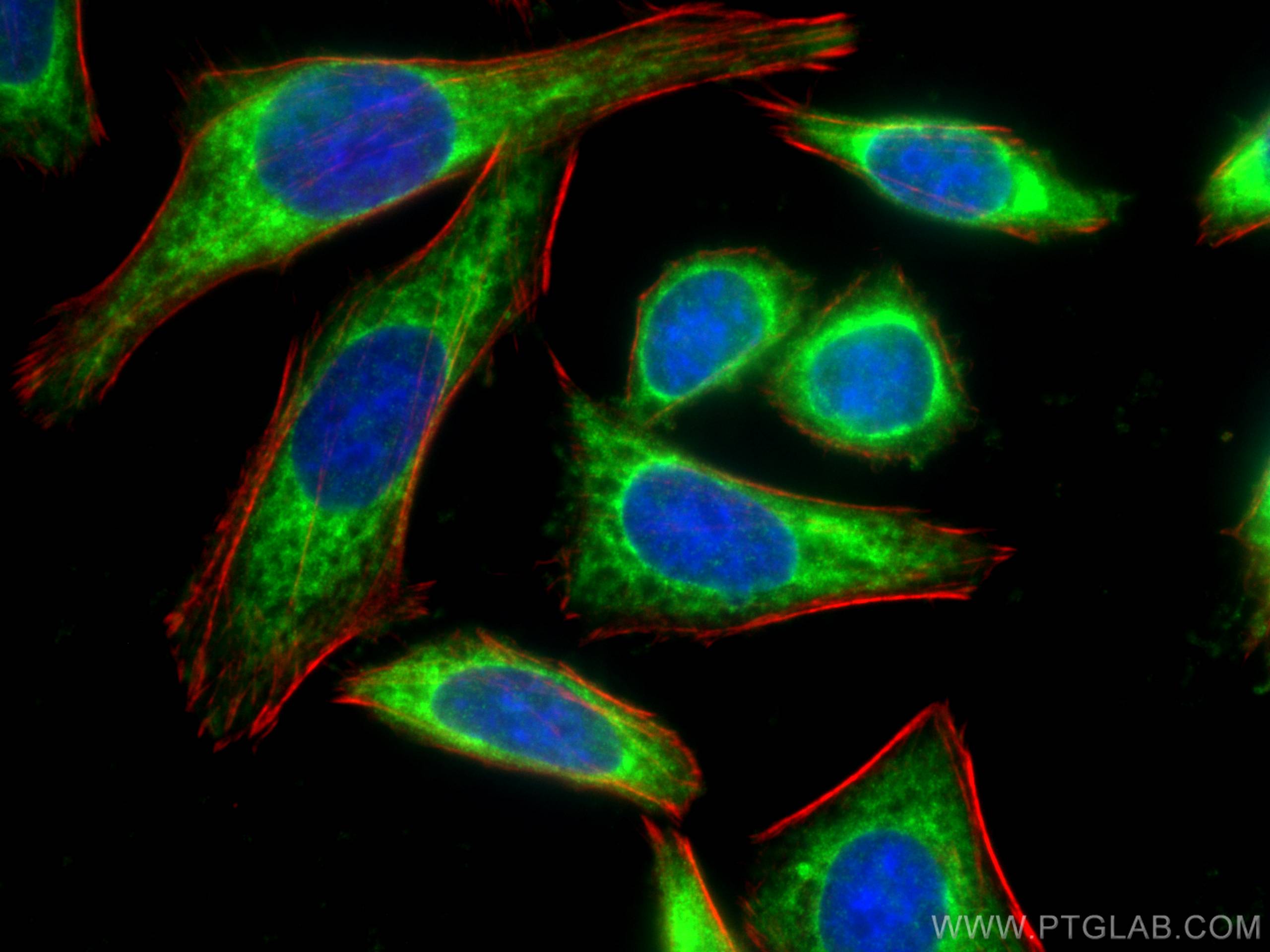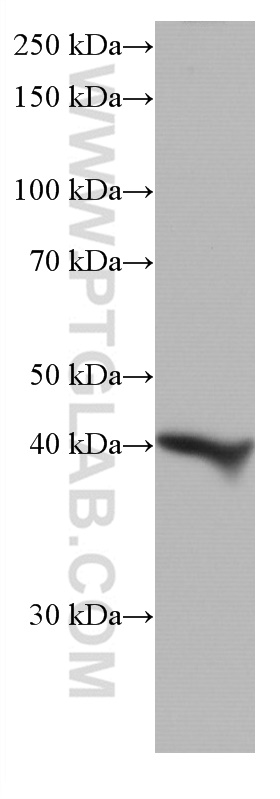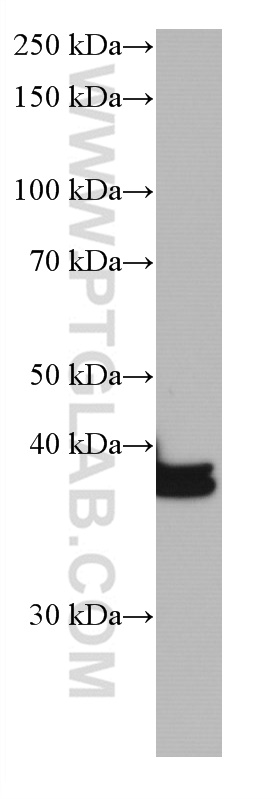验证数据展示
经过测试的应用
| Positive WB detected in | L02 cells, HepG2 cells, pig liver tissue, rat liver tissue, SMMC-7721 cells, HuH-7 cells |
| Positive IHC detected in | human liver cancer tissue Note: suggested antigen retrieval with TE buffer pH 9.0; (*) Alternatively, antigen retrieval may be performed with citrate buffer pH 6.0 |
| Positive IF/ICC detected in | HepG2 cells |
推荐稀释比
| 应用 | 推荐稀释比 |
|---|---|
| Western Blot (WB) | WB : 1:2000-1:10000 |
| Immunohistochemistry (IHC) | IHC : 1:1000-1:4000 |
| Immunofluorescence (IF)/ICC | IF/ICC : 1:200-1:800 |
| It is recommended that this reagent should be titrated in each testing system to obtain optimal results. | |
| Sample-dependent, Check data in validation data gallery. | |
产品信息
66939-1-Ig targets ADH1B in WB, IHC, IF/ICC, ELISA applications and shows reactivity with Human, Mouse, Rat, Pig samples.
| 经测试应用 | WB, IHC, IF/ICC, ELISA Application Description |
| 文献引用应用 | WB, IHC, IF |
| 经测试反应性 | Human, Mouse, Rat, Pig |
| 文献引用反应性 | human, mouse |
| 免疫原 |
CatNo: Ag10630 Product name: Recombinant human ADH1B protein Source: e coli.-derived, PET28a Tag: 6*His Domain: 1-375 aa of BC033009 Sequence: MSTAGKVIKCKAAVLWEVKKPFSIEDVEVAPPKAYEVRIKMVAVGICRTDDHVVSGNLVTPLPVILGHEAAGIVESVGEGVTTVKPGDKVIPLFTPQCGKCRVCKNPESNYCLKNDLGNPRGTLQDGTRRFTCRGKPIHHFLGTSTFSQYTVVDENAVAKIDAASPLEKVCLIGCGFSTGYGSAVNVAKVTPGSTCAVFGLGGVGLSAVMGCKAAGAARIIAVDINKDKFAKAKELGATECINPQDYKKPIQEVLKEMTDGGVDFSFEVIGRLDTMMASLLCCHEACGTSVIVGVPPASQNLSINPMLLLTGRTWKGAVYGGFKSKEGIPKLVADFMAKKFSLDALITHVLPFEKINEGFDLLHSGKSIRTVLTF 种属同源性预测 |
| 宿主/亚型 | Mouse / IgG2a |
| 抗体类别 | Monoclonal |
| 产品类型 | Antibody |
| 全称 | alcohol dehydrogenase 1B (class I), beta polypeptide |
| 别名 | ADH1B, Alcohol dehydrogenase 1B, DKFZp686C06125 |
| 计算分子量 | 375 aa, 40 kDa |
| 观测分子量 | 35-40 kDa |
| GenBank蛋白编号 | BC033009 |
| 基因名称 | ADH1B |
| Gene ID (NCBI) | 125 |
| RRID | AB_2882263 |
| 偶联类型 | Unconjugated |
| 形式 | Liquid |
| 纯化方式 | Protein A purification |
| UNIPROT ID | P00325 |
| 储存缓冲液 | PBS with 0.02% sodium azide and 50% glycerol, pH 7.3. |
| 储存条件 | Store at -20°C. Stable for one year after shipment. Aliquoting is unnecessary for -20oC storage. |
背景介绍
The ADH1B gene encodes the beta subunit of class I alcohol dehydrogenase (ADH), an enzyme that catalyzes the rate-limiting step for ethanol metabolism: the oxidation of alcohol to acetaldehyde. Class 1 ADH is a homo- or heterodimeric molecule, formed by the association of 3 types of class I ADH subunits, alpha (ADH1A), beta, and gamma(ADH1C). ADH1B is also named as ADH2 and belongs to the zinc-containing alcohol dehydrogenase family. This protein can exsit as a homodimer(PMID:19365573).
实验方案
| Product Specific Protocols | |
|---|---|
| IF protocol for ADH1B antibody 66939-1-Ig | Download protocol |
| IHC protocol for ADH1B antibody 66939-1-Ig | Download protocol |
| WB protocol for ADH1B antibody 66939-1-Ig | Download protocol |
| Standard Protocols | |
|---|---|
| Click here to view our Standard Protocols |
发表文章
| Species | Application | Title |
|---|---|---|
iScience A positive feed-forward loop between Fusobacterium nucleatum and ethanol metabolism reprogramming drives laryngeal cancer progression and metastasis. | ||
Front Pharmacol Kinsenoside Alleviates Alcoholic Liver Injury by Reducing Oxidative Stress, Inhibiting Endoplasmic Reticulum Stress, and Regulating AMPK-Dependent Autophagy. | ||
Front Genet Analysis of characteristic genes and ceRNA regulation mechanism of endometriosis based on full transcriptional sequencing | ||
Cell Rep Methods Modeling alcohol-associated liver disease in humans using adipose stromal or stem cell-derived organoids | ||
Oncoimmunology HIF2A mediates lineage transition to aggressive phenotype of cancer-associated fibroblasts in lung cancer brain metastasis | ||
Cancer Commun (Lond) Nicotinamide N-methyltransferase negatively regulates metastasis-promoting property of cancer-associated fibroblasts in lung adenocarcinoma |

